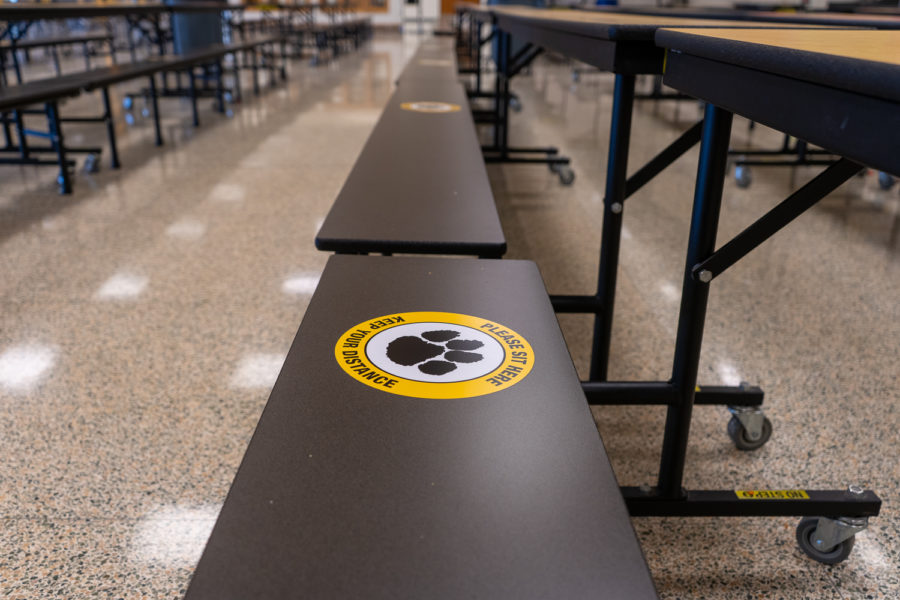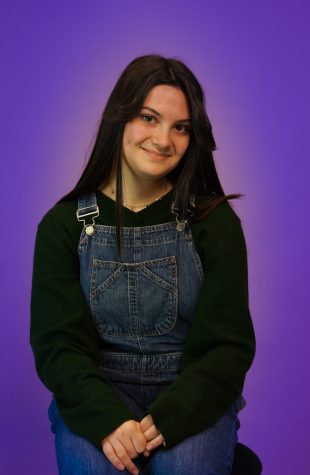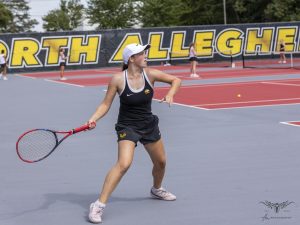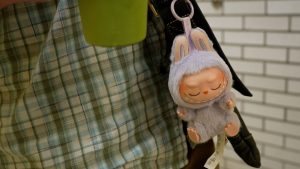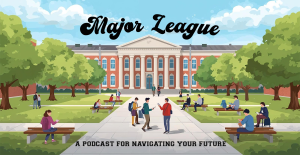Dining at a Distance
New lunch procedures at NASH are receiving a mixed reception.
Safety precautions in the cafeteria have necessitated additional changes to policies during the lunch periods.
March 16, 2021
After over a year of COVID-19 lockdown, high schools nationwide, including North Allegheny, are now phasing in full-time in-person learning. But as the NASH student population at school increases, safety measures have had to be implemented for lunches.
Students who buy lunch sit in the cafeteria, while those who pack sit in the auditorium. Although social distancing measures are still in place in both lunch areas, some feel that the cafeteria is still a problem.
“It’s an issue of how well kids want to follow along with [the rules],” said calculus teacher Ms. Volpe. “I haven’t had a hardcore argument with a kid in years, but now, I’m arguing with a kid about sliding over because I don’t want him to get sick.”
During lunch periods, students are discouraged from getting up and visiting other tables and are often asked to put up their masks when they are not actively eating. Some students, however, are finding the teachers’ enforcement of social distancing mandates irritating.
“It wouldn’t be as bad if they didn’t constantly make you feel like you were back at elementary school lunch,” explained one student who asked to remain anonymous.
Junior Renee Wilkins agreed.
“We have to raise our hands to get a napkin,” she said. “I feel very isolated from my friends.”
Because of distancing, it is harder for students to talk to their peers, something that senior Bryn Hornyak feels is very necessary for social development.
“Everyone’s on their phones the whole time,” she said.
This feeling of cafeteria loneliness is not uncommon, especially for those who rely on lunch to socially engage with friends.
“It makes me want to go back home,” senior Madison Beer said.
Those who pack lunch are feeling no better about the situation.
“Eating in the auditorium doesn’t make that much sense—there are no tables or anything. How are we supposed to eat?” said junior Vedha Avali.
In a large, open space like the auditorium, students can find it difficult to interact with their fellow classmates without having to shout to be heard. The situation has led some students who pack their lunch to purchase something like a carton of milk and then sit down in the cafeteria and consider themselves buyers.
One would think that this maneuver would anger a lunch monitor, but Mrs. Volpe is indifferent.
“I don’t think we care—that’s not even in my top thousand priority list,” she said.
The difficulties with lunch monitors continue, especially with students wanting to evade the social distancing rules.
“We have kids who are friends outside of school,” Volpe added, “kids who are siblings, kids who are dating who think that they should be still allowed to sit closer—we can’t have that happen.”
She explained that if a monitor were to allow one group of kids to sit closely together, another group of kids would have to be allowed as well.
“We can’t say one kid can do it and another can’t,” Volpe said.
Lunch monitors also have to follow students who go in groups to the restroom.
“It’s not safe to be in the bathroom with more than two people,” Volpe continued. “We’ll see herds of kids walking to the bathroom, so that’s another gig that I find I really don’t care for.”
Even though the situation is not ideal, Volpe is confident that lunch arrangements will return to normal eventually.
“As soon as kids are vaccinated, I think we’ll be back to regular status,” she said. “It will put us in a much safer position.”
Some students have been doubtful about a full return to lunch practices, but junior Adelle Snider is hopeful for next year.
“I think by next year we will be together in one cafeteria,” Snider said.


